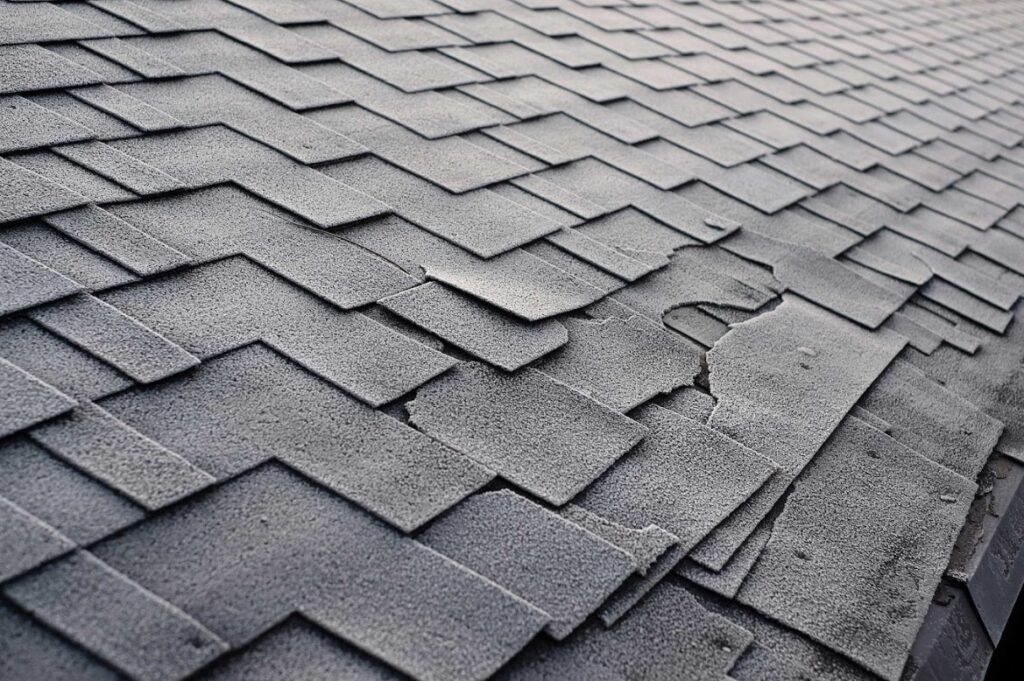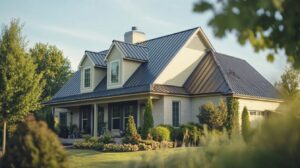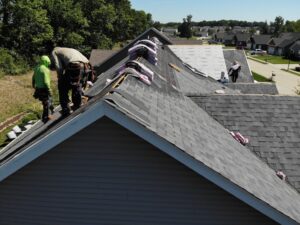A leaking roof is more than just an inconvenience—it can lead to serious structural damage, mold growth, and costly repairs if left untreated. Understanding the common causes of roof leaks can help homeowners take proactive steps to protect their homes.
At Freedom Roofing, we’ve helped countless homeowners in St. Louis identify and fix leaks before they turn into major problems. If you’ve noticed water stains on your ceiling, missing shingles, or damp spots in your attic, you may be dealing with a roof leak. Let’s explore what causes leaks and what you can do to prevent them.
1. Damaged or Missing Shingles
Shingles serve as your roof’s first line of defense against rain, wind, and snow. Over time, they can deteriorate due to age, extreme weather, or poor installation. Signs of shingle damage include:
✔ Missing or loose shingles
✔ Curling or buckling shingles
✔ Granules collecting in gutters
How to Prevent Shingle Damage:
- Schedule regular roof inspections, especially after storms
- Replace missing or damaged shingles immediately
- Choose high-quality shingles that can withstand St. Louis weather
Pro Tip: According to the Federal Emergency Management Agency (FEMA), high winds and storms are leading causes of shingle damage. Learn more about wind-resistant roofing materials here.

2. Clogged or Damaged Gutters
Your gutters play a crucial role in directing water away from your roof. When clogged with leaves, dirt, or debris, water can back up and seep into your roof’s structure.
Warning Signs of Clogged Gutters:
✔ Overflowing water during rainstorms
✔ Sagging or detached gutters
✔ Water stains on exterior walls
How to Keep Gutters Clear:
- Clean your gutters at least twice a year (spring and fall)
- Install gutter guards to reduce debris buildup
- Ensure downspouts are directing water away from the foundation
3. Damaged or Improperly Sealed Flashing
Flashing is the metal material used around chimneys, vents, skylights, and roof valleys to prevent water intrusion. If the flashing is cracked, corroded, or poorly sealed, leaks can form.
Common Flashing Problems:
✔ Rust or corrosion on metal flashing
✔ Gaps or cracks where flashing meets the roof
✔ Loose or missing flashing after heavy winds
How to Fix Flashing Issues:
- Inspect flashing annually for damage
- Use roofing cement or sealant to repair small gaps
- Replace severely corroded or missing flashing
4. Skylight Leaks and Poor Installation
Skylights add natural light to your home but can be a weak spot for leaks if not properly installed or maintained.
Signs of a Skylight Leak:
✔ Water stains around the skylight
✔ Condensation forming between glass panes
✔ Dripping water after rainstorms
How to Prevent Skylight Leaks:
- Ensure skylights are professionally installed with proper flashing
- Check for cracked seals or gaps around the edges
- Apply waterproof sealant if necessary
5. Cracked or Worn Roof Vent Boots
Roof vents allow heat and moisture to escape from your attic, but they can become a leak source if the rubber boot around them deteriorates.
How to Spot a Vent Boot Leak:
✔ Water stains near the vent pipe inside your attic
✔ Cracked or broken rubber boot around the vent
✔ Loose vent flashing
How to Fix Roof Vent Leaks:
- Replace worn-out vent boots with durable rubber or silicone materials
- Reseal around vents with roofing caulk
- Secure vent flashing to prevent movement during storms
Did You Know? Proper attic ventilation extends your roof’s lifespan by preventing moisture buildup. The U.S. Department of Energy provides more information on ventilation best practices here.
6. Ice Dams in Winter
During freezing temperatures, ice dams can form when warm air from inside your home melts snow on the roof. The melted snow refreezes at the edges, blocking water from draining properly.
Signs of Ice Dams:
✔ Icicles forming along the roof’s edge
✔ Water stains on interior ceilings or walls
✔ Shingles lifting due to trapped moisture
How to Prevent Ice Dams:
- Improve attic insulation to prevent heat loss
- Keep gutters clear to allow for proper drainage
- Use a roof rake to remove excess snow from the edges

7. Aging Roof and General Wear
Even with proper maintenance, every roof has a lifespan. Most asphalt shingle roofs last 20-30 years, while metal or tile roofs can last longer.
Signs Your Roof Is Aging:
✔ Frequent repairs needed
✔ Moss or algae growth
✔ Curled, cracked, or missing shingles
When to Consider a Roof Replacement:
- If your roof is over 20 years old
- If leaks become more frequent
- If an inspection reveals widespread damage
A roof replacement may be a better long-term investment than continuous repairs.
8. Poor Roof Installation or Repairs
A roof installed incorrectly is more likely to develop leaks sooner than expected. Hiring unqualified contractors or using low-quality materials can lead to:
✔ Improperly sealed flashing
✔ Misaligned shingles
✔ Weak underlayment
How to Avoid Bad Roof Installations:
- Always hire licensed and experienced roofing contractors
- Ask for references and read reviews before choosing a roofer
- Ensure a warranty is included with the installation
At Freedom Roofing, we guarantee high-quality roofing services backed by expert craftsmanship and reliable materials.
Protect Your Home with Professional Roof Repairs
A leaky roof can lead to significant damage if not addressed quickly. Knowing the common causes of roof leaks allows homeowners to take preventative action and schedule repairs before minor issues turn into costly problems.
At Freedom Roofing, we specialize in:
✔ Roof inspections and leak detection
✔ Shingle and flashing repairs
✔ Full roof replacements for long-term protection
Get a Free Roof Inspection Today!
Don’t wait until a small leak turns into a major headache. Get a free estimate now and let our experienced team protect your home with expert roofing solutions.



